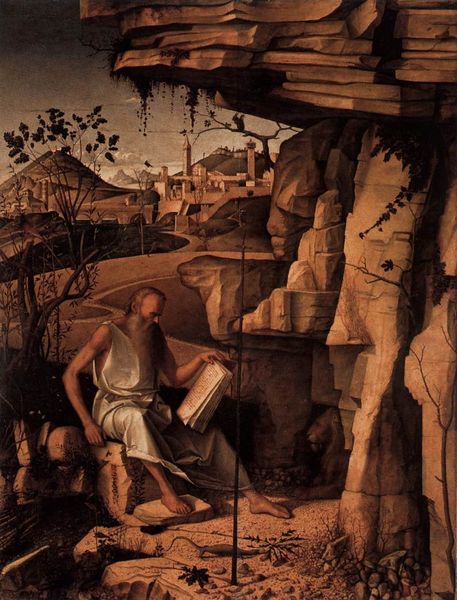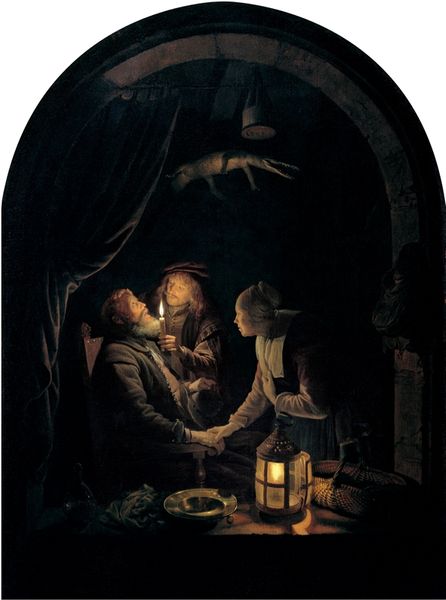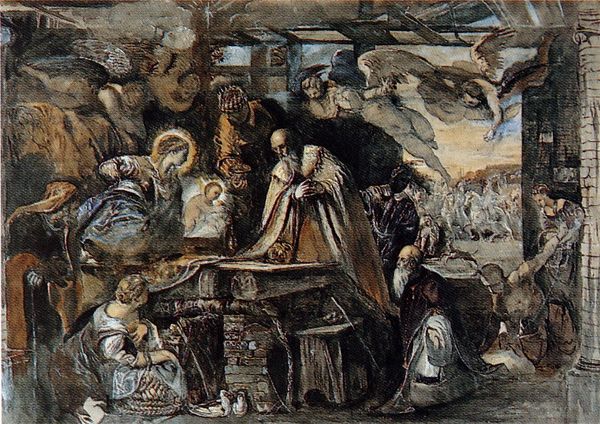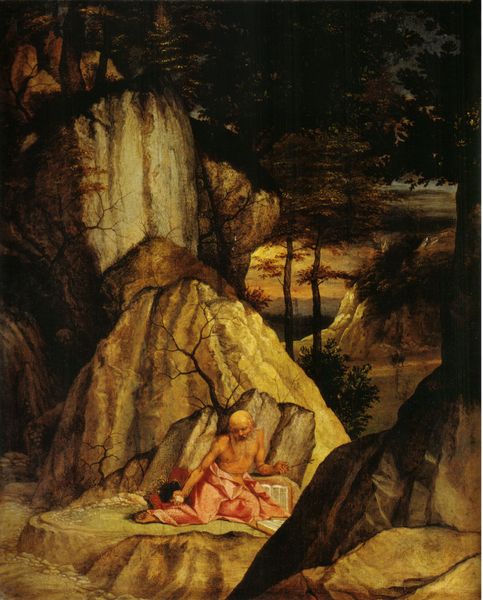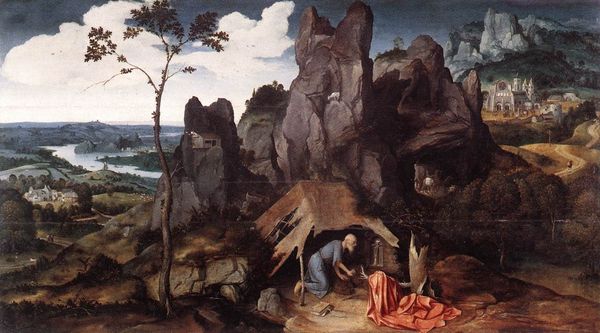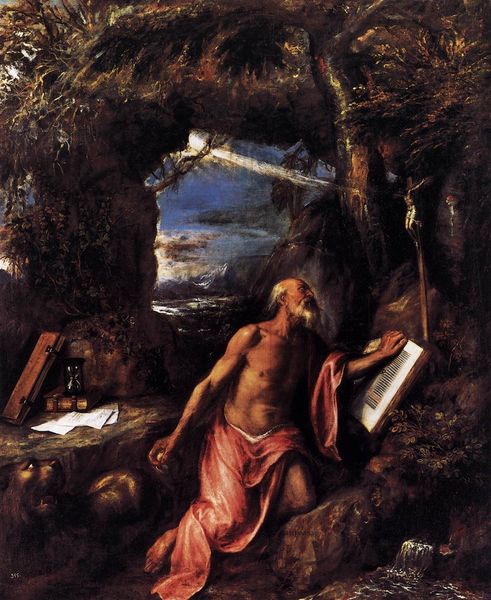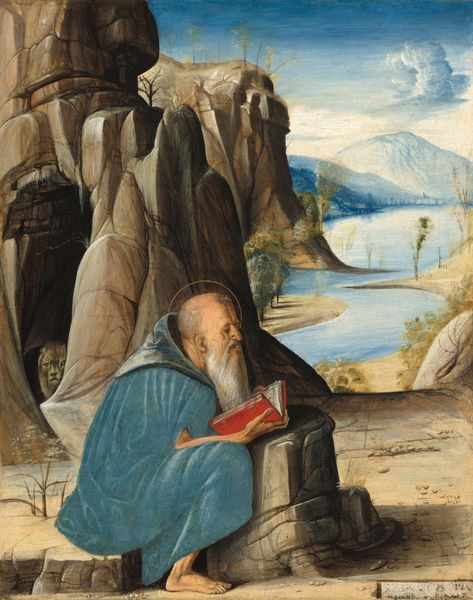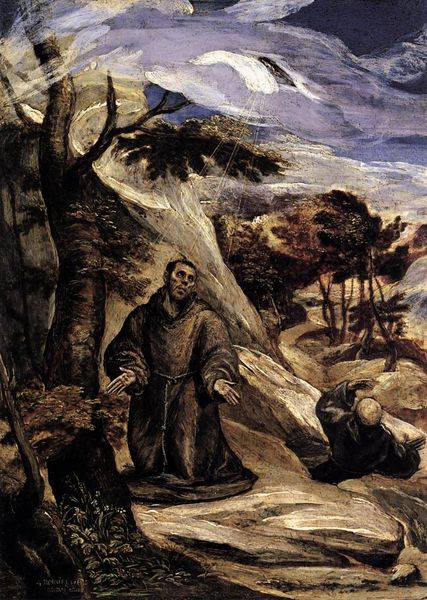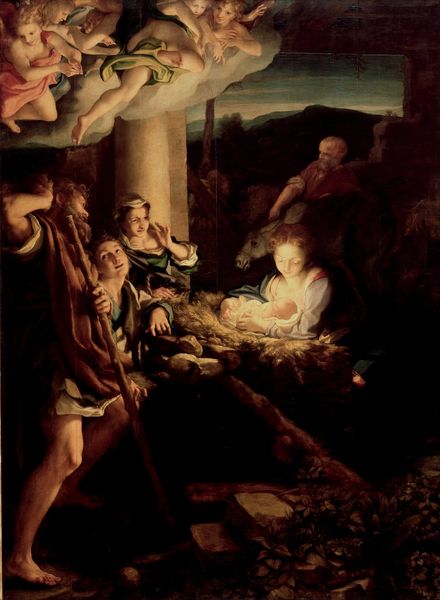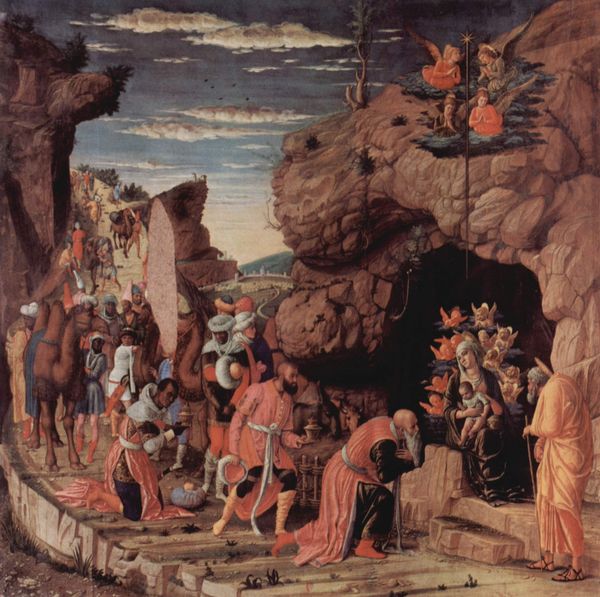
tempera, painting
#
portrait
#
allegory
#
tempera
#
painting
#
landscape
#
figuration
#
rock
#
christianity
#
history-painting
#
italian-renaissance
#
early-renaissance
#
realism
#
christ
Dimensions: 48 x 36 cm
Copyright: Public domain
Andrea Mantegna painted Saint Jerome in the Wilderness in the late 15th century, a period marked by the revival of classical learning and humanist ideals in Italy. Mantegna situates Saint Jerome, a towering figure in biblical scholarship, within a rocky, austere landscape that embodies both physical and spiritual isolation. The painting reflects the period’s fascination with the individual and their capacity for intellectual and spiritual growth. Jerome's act of translating the Bible into Latin was a monumental undertaking, and here Mantegna captures a moment of contemplation and study. Jerome’s removal to the desert is as much about the historical context of monasticism as it is about the personal quest for meaning. The inclusion of personal effects such as his sandals and cardinal’s hat, removed and discarded on the ground, add an emotionally intimate dimension. The question of what it means to be human, what it means to sacrifice, is as salient now as it was then. The image offers us not just a depiction of a saint, but an exploration into the nature of devotion, intellect, and the human condition.
Comments
No comments
Be the first to comment and join the conversation on the ultimate creative platform.
